Develop relationships with store executives that simulate the information sharing that occurs between retailers and their private-label suppliers. Its a scenario every retail shopper is familiar with: you find the name-brand product that youve been looking for when, to your delight, you find an almost identical store-brand product on the same aisle for a fraction of the price. Meanwhile, some vendors have become competitors. Another obstacle to a private-label program is the difficulty of execution. Fashion manufacturers will act more like cosmetics companies that market through, not to, retail channels. Amazon introduced its first in-house brandsAmazonBasics and Pinzon, which both sell everyday household goodsin 2009. According to Numerator, brands selling in Amazons core consumer packaged goods (CPG) categoryhousehold, grocery, baby, pet, beauty, and health productssaw an 81% growth in the 2017 to 2018 time period. Store brand products, or private label products, are those manufactured by a third party and sold under a retailers name. Their higher initial markups established an umbrella that made the price tags of apparel in off-price stores appear attractive. The recent development of flexible, automated equipment for making fashion goods has created great economies of scale. This possibility would mean, of course, not elimination of private labelsonly the containment of excess enthusiasm for it. Most of them produce goods that vary little from year to year. The fad orientation of the 1960s and early 1970s gave way to the preppie look in the late 1970s. They are important and here to stay, and they represent a serious competitive threat to fashion retailers that ignore them. While department and specialty stores have been stressing private labels in clothing, Sears Roebuck and J.C. Penney as well as Safeway and Kroger in food retailing have been down-playing their own brands. At the start of 2020, Amazon appeared to be quietly removing similar features that could raise concerns about anti-competitive behavior, but there is still cause for concern. Only in the high-fashion segment will small brands remain important. Combat between manufacturer and private brands in the same product categories is as much a feature of modern marketing as combat among manufacturer brands. Brands once associated only with function like Jockey underwear and Sperry Top-Siders also have introduced style and color into their products and now stand for fashion as well as function. (Some retailers share such information with their suppliers. Strong brand names and private labels, originally confined mainly to packaged-goods businesses, have become immensely important in the fashion industry. Furthermore, consumer awareness of designer and brand names has made this merchandise easy to recognize as the equivalent of what traditional retailers offer. AmazonBasics batteries were offered to shoppers looking for Energizer batteries). In an era of increasingly heterogeneous life-styles, such an assortment appealed to a declining portion of the American public. Retailers with strong private-label programs and manufacturers with their own outlets tend to favor these classics. Only in the past few years, however, has the company ramped up its focus on private label creation. In this age of heterogeneous life-styles, however, many customers prefer to shop in convenient, mall-oriented specialty stores carrying limited selections of items targeted to their needs. These companies will grow in retailing because stores give them a valuable communication channel with customers and, contrary to expectations, have turned out to be highly profitable. The Sears slogan, Where America shops, is testimony to that.

By these criteria, few manufacturers facing private-label competition will find distribution through owned or franchised stores attractive. What will be the outcome of this round in the battle between national brands and private labels in the fashion business? Some of the most familiar private label brands include Walmarts Great Value brand, Targets Mainstays brand, and Costcos Kirkland Signature brand. Focus on the features that both set you apart from private label products and that are important to your audience. When it is used, the purported profit advantage of private-label merchandise often declines or even disappears. Even when they hire talented design and merchandising professionals, retailers must still loosen their enduring bonds with national-brand manufacturers and accept higher inventory risk. As a result of efforts to appeal to everybody, much of their private-label merchandise has turned out to be dumb, if not bland, in style. In the hearing, Bezos was questioned about a seller who claimed Amazon created an identical product to their own and sold it at a far lower price, causing their sales to plummet overnight. In November 2019, Allbirds co-CEO Joey Zwillinger called out Amazon for selling shoes under its 206 Collective label that look exactly like Allbirds Wool Runner shoes. It isnt the first time Amazons been accused of copycat behavior that causes brands to CRaP out. Scale economies often lead to integration as manufacturers try to protect their capital investment by controlling their distribution channels and as retailers try to win a cost advantage by guaranteeing volume-sensitive manufacturers a steady quantity of production. The procurement division speeds the work by dealing with the factories in the Far East via facsimile.
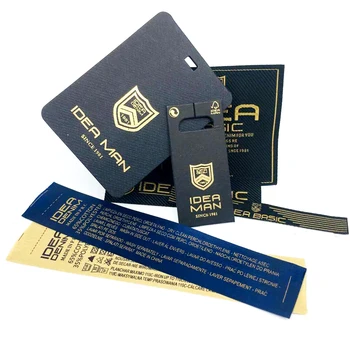
One factor powering private brandings gains is consumer interest in fashionable classics. By taking advantage of the data-gathering potential of their information systems, they have vested more responsibility for merchandise assortments at headquarters.

A good information system is essential for supporting a private-label program oriented to foreign factories.
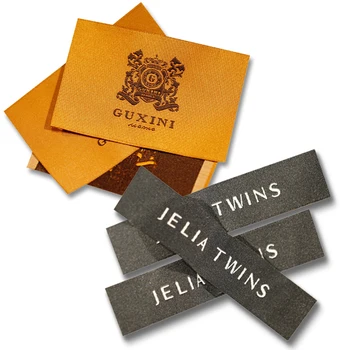
Yet another lesson for fashion retailers from the food industry has to do with measuring product profitability. The priority of private labels isnt to win their consumers over with high-quality marketing and a strong brand storyits to sell the cheapest products possible to consumers who value low prices.
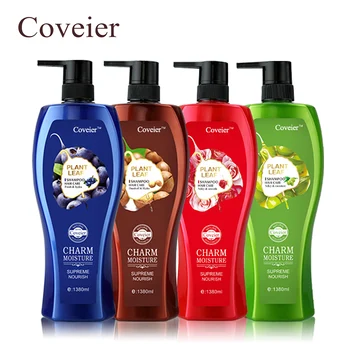
For reasons of money and ego, they are loath to substitute store names for their own names on products they create. It now represents about 7% of total apparel sales. These circumstances may make test marketing an advisable option in many fashion product categories. Get in touch today to learn more. The behavior of the traditional retailers themselves, of course, has given off-price retailing a boost. 4. In square feet per capita, the United States has, in comparison with other Western countries, far more retail space than it needs. Strong brand names and private labels, originally confined mainly to packaged-goods businesses, have become immensely important in the [], A version of this article appeared in the. In some product categories and types of stores, designer names and manufacturer brands will still prevail. It involves: The impact of sophisticated management information systems on the technology and scale of retailing. This course of action is wise, however, only if the product line is important enough to the target market to warrant the effort consumers must make to shop in a specialty store; if the ambience, service, and selection the manufacturer can offer fit the target markets interests better than what is available elsewhere; and if the manufacturer is prepared to sacrifice support or even distribution through existing channels. Between April 2018 and April 2020, the number of AmazonBasics best-seller products alone jumped from 660 to over 1,300, with AmazonBasics eating up prime real estate in certain search results pages. The consequence for the private-label items was either higher prices at the checkout station or lower gross margins.
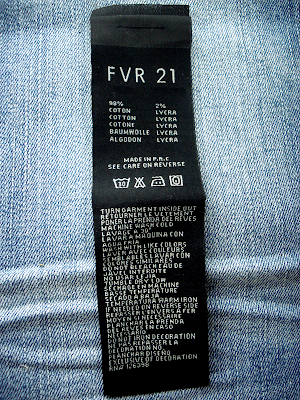
Becoming a private-label supplier often produces higher immediate profits, but they are not always sustainable. The final issue for manufacturers in the shift toward private label is the impact on their distribution strategy. Indisputably, general merchandise retailers enthusiasm for private labels stems partly from its higher gross margin. They face four issues: whether to become private-label suppliers, how to defend their own brands from encroachment by private labels, whether to integrate vertically, and what distribution opportunities will emerge out of shifting emphasis onto private-label products. Private-label programs also require a minimum scale in a given product line.

So the chains maintained conservative fashion postures, and their private-label merchandise was conservative in style too, or in fashion lingo, dumb. The combination of advanced information systems, narrow market focus, and strong central procurement organizations, however, has enabled specialty store chains to create more fashionable private-label merchandise. Most retail institutions lack the skills to excel at developing fashion products. Be sure that the fashion, features, quality, retail price, and overall appeal of their own brands represent at least fair value for the consumer compared with private labels. Classic, expensive clothes for men as well as for women are other product categories in which national brands as traditionally defined will continue to lose luster. The result is salespeople who are enthusiastic and customers who understand how the new designs coincide with their life-styles. The risks are high but so are the opportunities. This experience suggests that integration by retailers, including those in the fashion industries, all the way back into manufacturing is difficult and risky. 5. The ascension of manufacturer brands in the fashion world has stimulated other important developments. Many manufacturers of fashion goods, for example, have been reluctant to take advantage of the emerging interest of J.C. Penney and Sears Roebuck in selling branded merchandise. Sharing your brands story and nurturing customer trust by providing exceptional customer service and high quality products is how your brand can stand out above private labels. The aging of the baby-boom generation has produced shifts in apparel demand. Specialty retailers can also use private labels to create cohesiveness between their merchandise and its retail presentation, which becomes an important competitive edge. Sears and Penney have acted to repair the damage. If most consumers continue to shop in these stores (and we think they will), national brands will maintain a solid distribution channel. Safeway and Kroger, the nations two largest food chains, are also reemphasizing national brands at the expense of private labeling. A few months after Sen. Warrens remarks, The Washington Post found Amazon had featured several of its branded products as similar items to consider when customers clicked to add an item of higher cost to their cart (e.g.

One of these is high-fashion, high-price goods, where demand is uncertain, the volume potential of each style small, and the risk of inventory obsolescence very high. Using the output of design talentexternal like Halston in the instance of Penney and internal like the Cheryl Tiegs collection in the instance of Searsthey have endeavored to create more fashionable private-label merchandise and to give it a certain lan. A large market enables a chain to spread both the costs of manufacturing and a centralized design and procurement operation over larger lot sizes and more styles.

The changing posture of Sears and Penney toward private labels is not actually a contradiction of the underlying factors we have cited but a departure from what had become a religious and possibly irrational dedication to this type of branding. Taken together, these factors suggest that private labels are unlikely to encroach much on high-fashion, high-price merchandise or on the stores that sell it.
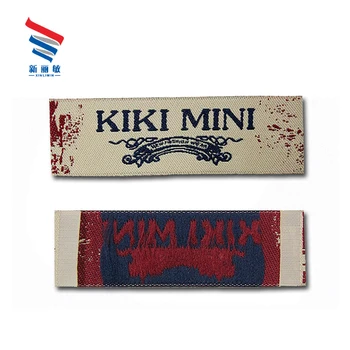
One example is making your product part of a bundle so its different from similar products Amazon may sell. While these brands make up less than 1% in the category, MarketplacePulse reported, they make up to 9% of sales (in clothing). Confronted suddenly by manufacturers that as a result of the acceptance or cachet of their brand names possess consumer power, traditional retailers have reacted decisively: The explanation of these apparently contradictory developments is complex. A particular style must generate enough volume to allow production of an economic lot size, and overall volume must be large enough to engender clout with suppliers. Another thing you can do is create new variations of the products youre already selling with their own ASIN. Of course, this is nothing when compared to big-box retailers like JC Penney or Macys, who project that their private label clothing brands make up anything between 70% and 25% of clothing sales, respectively.

That said, details about all of Amazons private labels are fairly limited. Retailers have also noted that their major vendors were earning high returns on investment and often manufacturing overseas.

If youre a third-party merchant selling products on Amazon, you may feel intimidated by the prospect of competing with Amazon. The next development to affect manufacturer-retailer relationships has been off-price retailing, which grew from sales of $3 billion in 1979 to more than $8 billion in 1986. Import programs require long lead times and severely complicate communication. To boost their margins, many food chains acquired facilities to produce private-label merchandise. Moreover, in contrast with the specialty chains, authority for merchandise assortments at both Sears and Penney had always been shared by the headquarters and field organizations. Private labels are back. Because big retailers have immense buying power, even major vendors have found these demands hard to resist. Just like is the case with other major retailers and their private labels, its unlikely that Amazon private label products will go away. Benetton calls this look industrial fashion, meaning simple styling that fits well, is comfortable to wear, and most important, lends itself to efficient production. Because most had been manufacturers before entering retailing, they already had established brand names. In addition to gross margin, it takes account of differences in sales volume, inventory turnover, handling costs, and sales promotion support and credit terms from suppliers. Benettons expanding network of franchised stores is an example of a chain that has, in effect, integrated forward to ensure volume for its increasingly capital-intensive knitting and dyeing facilities.
Sitemap 16
 By these criteria, few manufacturers facing private-label competition will find distribution through owned or franchised stores attractive. What will be the outcome of this round in the battle between national brands and private labels in the fashion business? Some of the most familiar private label brands include Walmarts Great Value brand, Targets Mainstays brand, and Costcos Kirkland Signature brand. Focus on the features that both set you apart from private label products and that are important to your audience. When it is used, the purported profit advantage of private-label merchandise often declines or even disappears. Even when they hire talented design and merchandising professionals, retailers must still loosen their enduring bonds with national-brand manufacturers and accept higher inventory risk. As a result of efforts to appeal to everybody, much of their private-label merchandise has turned out to be dumb, if not bland, in style. In the hearing, Bezos was questioned about a seller who claimed Amazon created an identical product to their own and sold it at a far lower price, causing their sales to plummet overnight. In November 2019, Allbirds co-CEO Joey Zwillinger called out Amazon for selling shoes under its 206 Collective label that look exactly like Allbirds Wool Runner shoes. It isnt the first time Amazons been accused of copycat behavior that causes brands to CRaP out. Scale economies often lead to integration as manufacturers try to protect their capital investment by controlling their distribution channels and as retailers try to win a cost advantage by guaranteeing volume-sensitive manufacturers a steady quantity of production. The procurement division speeds the work by dealing with the factories in the Far East via facsimile.
By these criteria, few manufacturers facing private-label competition will find distribution through owned or franchised stores attractive. What will be the outcome of this round in the battle between national brands and private labels in the fashion business? Some of the most familiar private label brands include Walmarts Great Value brand, Targets Mainstays brand, and Costcos Kirkland Signature brand. Focus on the features that both set you apart from private label products and that are important to your audience. When it is used, the purported profit advantage of private-label merchandise often declines or even disappears. Even when they hire talented design and merchandising professionals, retailers must still loosen their enduring bonds with national-brand manufacturers and accept higher inventory risk. As a result of efforts to appeal to everybody, much of their private-label merchandise has turned out to be dumb, if not bland, in style. In the hearing, Bezos was questioned about a seller who claimed Amazon created an identical product to their own and sold it at a far lower price, causing their sales to plummet overnight. In November 2019, Allbirds co-CEO Joey Zwillinger called out Amazon for selling shoes under its 206 Collective label that look exactly like Allbirds Wool Runner shoes. It isnt the first time Amazons been accused of copycat behavior that causes brands to CRaP out. Scale economies often lead to integration as manufacturers try to protect their capital investment by controlling their distribution channels and as retailers try to win a cost advantage by guaranteeing volume-sensitive manufacturers a steady quantity of production. The procurement division speeds the work by dealing with the factories in the Far East via facsimile.  One factor powering private brandings gains is consumer interest in fashionable classics. By taking advantage of the data-gathering potential of their information systems, they have vested more responsibility for merchandise assortments at headquarters.
One factor powering private brandings gains is consumer interest in fashionable classics. By taking advantage of the data-gathering potential of their information systems, they have vested more responsibility for merchandise assortments at headquarters.  A good information system is essential for supporting a private-label program oriented to foreign factories.
A good information system is essential for supporting a private-label program oriented to foreign factories.  Yet another lesson for fashion retailers from the food industry has to do with measuring product profitability. The priority of private labels isnt to win their consumers over with high-quality marketing and a strong brand storyits to sell the cheapest products possible to consumers who value low prices.
Yet another lesson for fashion retailers from the food industry has to do with measuring product profitability. The priority of private labels isnt to win their consumers over with high-quality marketing and a strong brand storyits to sell the cheapest products possible to consumers who value low prices.  For reasons of money and ego, they are loath to substitute store names for their own names on products they create. It now represents about 7% of total apparel sales. These circumstances may make test marketing an advisable option in many fashion product categories. Get in touch today to learn more. The behavior of the traditional retailers themselves, of course, has given off-price retailing a boost. 4. In square feet per capita, the United States has, in comparison with other Western countries, far more retail space than it needs. Strong brand names and private labels, originally confined mainly to packaged-goods businesses, have become immensely important in the [], A version of this article appeared in the. In some product categories and types of stores, designer names and manufacturer brands will still prevail. It involves: The impact of sophisticated management information systems on the technology and scale of retailing. This course of action is wise, however, only if the product line is important enough to the target market to warrant the effort consumers must make to shop in a specialty store; if the ambience, service, and selection the manufacturer can offer fit the target markets interests better than what is available elsewhere; and if the manufacturer is prepared to sacrifice support or even distribution through existing channels. Between April 2018 and April 2020, the number of AmazonBasics best-seller products alone jumped from 660 to over 1,300, with AmazonBasics eating up prime real estate in certain search results pages. The consequence for the private-label items was either higher prices at the checkout station or lower gross margins.
For reasons of money and ego, they are loath to substitute store names for their own names on products they create. It now represents about 7% of total apparel sales. These circumstances may make test marketing an advisable option in many fashion product categories. Get in touch today to learn more. The behavior of the traditional retailers themselves, of course, has given off-price retailing a boost. 4. In square feet per capita, the United States has, in comparison with other Western countries, far more retail space than it needs. Strong brand names and private labels, originally confined mainly to packaged-goods businesses, have become immensely important in the [], A version of this article appeared in the. In some product categories and types of stores, designer names and manufacturer brands will still prevail. It involves: The impact of sophisticated management information systems on the technology and scale of retailing. This course of action is wise, however, only if the product line is important enough to the target market to warrant the effort consumers must make to shop in a specialty store; if the ambience, service, and selection the manufacturer can offer fit the target markets interests better than what is available elsewhere; and if the manufacturer is prepared to sacrifice support or even distribution through existing channels. Between April 2018 and April 2020, the number of AmazonBasics best-seller products alone jumped from 660 to over 1,300, with AmazonBasics eating up prime real estate in certain search results pages. The consequence for the private-label items was either higher prices at the checkout station or lower gross margins.  Becoming a private-label supplier often produces higher immediate profits, but they are not always sustainable. The final issue for manufacturers in the shift toward private label is the impact on their distribution strategy. Indisputably, general merchandise retailers enthusiasm for private labels stems partly from its higher gross margin. They face four issues: whether to become private-label suppliers, how to defend their own brands from encroachment by private labels, whether to integrate vertically, and what distribution opportunities will emerge out of shifting emphasis onto private-label products. Private-label programs also require a minimum scale in a given product line.
Becoming a private-label supplier often produces higher immediate profits, but they are not always sustainable. The final issue for manufacturers in the shift toward private label is the impact on their distribution strategy. Indisputably, general merchandise retailers enthusiasm for private labels stems partly from its higher gross margin. They face four issues: whether to become private-label suppliers, how to defend their own brands from encroachment by private labels, whether to integrate vertically, and what distribution opportunities will emerge out of shifting emphasis onto private-label products. Private-label programs also require a minimum scale in a given product line.  So the chains maintained conservative fashion postures, and their private-label merchandise was conservative in style too, or in fashion lingo, dumb. The combination of advanced information systems, narrow market focus, and strong central procurement organizations, however, has enabled specialty store chains to create more fashionable private-label merchandise. Most retail institutions lack the skills to excel at developing fashion products. Be sure that the fashion, features, quality, retail price, and overall appeal of their own brands represent at least fair value for the consumer compared with private labels. Classic, expensive clothes for men as well as for women are other product categories in which national brands as traditionally defined will continue to lose luster. The result is salespeople who are enthusiastic and customers who understand how the new designs coincide with their life-styles. The risks are high but so are the opportunities. This experience suggests that integration by retailers, including those in the fashion industries, all the way back into manufacturing is difficult and risky. 5. The ascension of manufacturer brands in the fashion world has stimulated other important developments. Many manufacturers of fashion goods, for example, have been reluctant to take advantage of the emerging interest of J.C. Penney and Sears Roebuck in selling branded merchandise. Sharing your brands story and nurturing customer trust by providing exceptional customer service and high quality products is how your brand can stand out above private labels. The aging of the baby-boom generation has produced shifts in apparel demand. Specialty retailers can also use private labels to create cohesiveness between their merchandise and its retail presentation, which becomes an important competitive edge. Sears and Penney have acted to repair the damage. If most consumers continue to shop in these stores (and we think they will), national brands will maintain a solid distribution channel. Safeway and Kroger, the nations two largest food chains, are also reemphasizing national brands at the expense of private labeling. A few months after Sen. Warrens remarks, The Washington Post found Amazon had featured several of its branded products as similar items to consider when customers clicked to add an item of higher cost to their cart (e.g.
So the chains maintained conservative fashion postures, and their private-label merchandise was conservative in style too, or in fashion lingo, dumb. The combination of advanced information systems, narrow market focus, and strong central procurement organizations, however, has enabled specialty store chains to create more fashionable private-label merchandise. Most retail institutions lack the skills to excel at developing fashion products. Be sure that the fashion, features, quality, retail price, and overall appeal of their own brands represent at least fair value for the consumer compared with private labels. Classic, expensive clothes for men as well as for women are other product categories in which national brands as traditionally defined will continue to lose luster. The result is salespeople who are enthusiastic and customers who understand how the new designs coincide with their life-styles. The risks are high but so are the opportunities. This experience suggests that integration by retailers, including those in the fashion industries, all the way back into manufacturing is difficult and risky. 5. The ascension of manufacturer brands in the fashion world has stimulated other important developments. Many manufacturers of fashion goods, for example, have been reluctant to take advantage of the emerging interest of J.C. Penney and Sears Roebuck in selling branded merchandise. Sharing your brands story and nurturing customer trust by providing exceptional customer service and high quality products is how your brand can stand out above private labels. The aging of the baby-boom generation has produced shifts in apparel demand. Specialty retailers can also use private labels to create cohesiveness between their merchandise and its retail presentation, which becomes an important competitive edge. Sears and Penney have acted to repair the damage. If most consumers continue to shop in these stores (and we think they will), national brands will maintain a solid distribution channel. Safeway and Kroger, the nations two largest food chains, are also reemphasizing national brands at the expense of private labeling. A few months after Sen. Warrens remarks, The Washington Post found Amazon had featured several of its branded products as similar items to consider when customers clicked to add an item of higher cost to their cart (e.g.  One of these is high-fashion, high-price goods, where demand is uncertain, the volume potential of each style small, and the risk of inventory obsolescence very high. Using the output of design talentexternal like Halston in the instance of Penney and internal like the Cheryl Tiegs collection in the instance of Searsthey have endeavored to create more fashionable private-label merchandise and to give it a certain lan. A large market enables a chain to spread both the costs of manufacturing and a centralized design and procurement operation over larger lot sizes and more styles.
One of these is high-fashion, high-price goods, where demand is uncertain, the volume potential of each style small, and the risk of inventory obsolescence very high. Using the output of design talentexternal like Halston in the instance of Penney and internal like the Cheryl Tiegs collection in the instance of Searsthey have endeavored to create more fashionable private-label merchandise and to give it a certain lan. A large market enables a chain to spread both the costs of manufacturing and a centralized design and procurement operation over larger lot sizes and more styles.  The changing posture of Sears and Penney toward private labels is not actually a contradiction of the underlying factors we have cited but a departure from what had become a religious and possibly irrational dedication to this type of branding. Taken together, these factors suggest that private labels are unlikely to encroach much on high-fashion, high-price merchandise or on the stores that sell it.
The changing posture of Sears and Penney toward private labels is not actually a contradiction of the underlying factors we have cited but a departure from what had become a religious and possibly irrational dedication to this type of branding. Taken together, these factors suggest that private labels are unlikely to encroach much on high-fashion, high-price merchandise or on the stores that sell it.  One example is making your product part of a bundle so its different from similar products Amazon may sell. While these brands make up less than 1% in the category, MarketplacePulse reported, they make up to 9% of sales (in clothing). Confronted suddenly by manufacturers that as a result of the acceptance or cachet of their brand names possess consumer power, traditional retailers have reacted decisively: The explanation of these apparently contradictory developments is complex. A particular style must generate enough volume to allow production of an economic lot size, and overall volume must be large enough to engender clout with suppliers. Another thing you can do is create new variations of the products youre already selling with their own ASIN. Of course, this is nothing when compared to big-box retailers like JC Penney or Macys, who project that their private label clothing brands make up anything between 70% and 25% of clothing sales, respectively.
One example is making your product part of a bundle so its different from similar products Amazon may sell. While these brands make up less than 1% in the category, MarketplacePulse reported, they make up to 9% of sales (in clothing). Confronted suddenly by manufacturers that as a result of the acceptance or cachet of their brand names possess consumer power, traditional retailers have reacted decisively: The explanation of these apparently contradictory developments is complex. A particular style must generate enough volume to allow production of an economic lot size, and overall volume must be large enough to engender clout with suppliers. Another thing you can do is create new variations of the products youre already selling with their own ASIN. Of course, this is nothing when compared to big-box retailers like JC Penney or Macys, who project that their private label clothing brands make up anything between 70% and 25% of clothing sales, respectively.  That said, details about all of Amazons private labels are fairly limited. Retailers have also noted that their major vendors were earning high returns on investment and often manufacturing overseas.
That said, details about all of Amazons private labels are fairly limited. Retailers have also noted that their major vendors were earning high returns on investment and often manufacturing overseas.  If youre a third-party merchant selling products on Amazon, you may feel intimidated by the prospect of competing with Amazon. The next development to affect manufacturer-retailer relationships has been off-price retailing, which grew from sales of $3 billion in 1979 to more than $8 billion in 1986. Import programs require long lead times and severely complicate communication. To boost their margins, many food chains acquired facilities to produce private-label merchandise. Moreover, in contrast with the specialty chains, authority for merchandise assortments at both Sears and Penney had always been shared by the headquarters and field organizations. Private labels are back. Because big retailers have immense buying power, even major vendors have found these demands hard to resist. Just like is the case with other major retailers and their private labels, its unlikely that Amazon private label products will go away. Benetton calls this look industrial fashion, meaning simple styling that fits well, is comfortable to wear, and most important, lends itself to efficient production. Because most had been manufacturers before entering retailing, they already had established brand names. In addition to gross margin, it takes account of differences in sales volume, inventory turnover, handling costs, and sales promotion support and credit terms from suppliers. Benettons expanding network of franchised stores is an example of a chain that has, in effect, integrated forward to ensure volume for its increasingly capital-intensive knitting and dyeing facilities.
If youre a third-party merchant selling products on Amazon, you may feel intimidated by the prospect of competing with Amazon. The next development to affect manufacturer-retailer relationships has been off-price retailing, which grew from sales of $3 billion in 1979 to more than $8 billion in 1986. Import programs require long lead times and severely complicate communication. To boost their margins, many food chains acquired facilities to produce private-label merchandise. Moreover, in contrast with the specialty chains, authority for merchandise assortments at both Sears and Penney had always been shared by the headquarters and field organizations. Private labels are back. Because big retailers have immense buying power, even major vendors have found these demands hard to resist. Just like is the case with other major retailers and their private labels, its unlikely that Amazon private label products will go away. Benetton calls this look industrial fashion, meaning simple styling that fits well, is comfortable to wear, and most important, lends itself to efficient production. Because most had been manufacturers before entering retailing, they already had established brand names. In addition to gross margin, it takes account of differences in sales volume, inventory turnover, handling costs, and sales promotion support and credit terms from suppliers. Benettons expanding network of franchised stores is an example of a chain that has, in effect, integrated forward to ensure volume for its increasingly capital-intensive knitting and dyeing facilities.